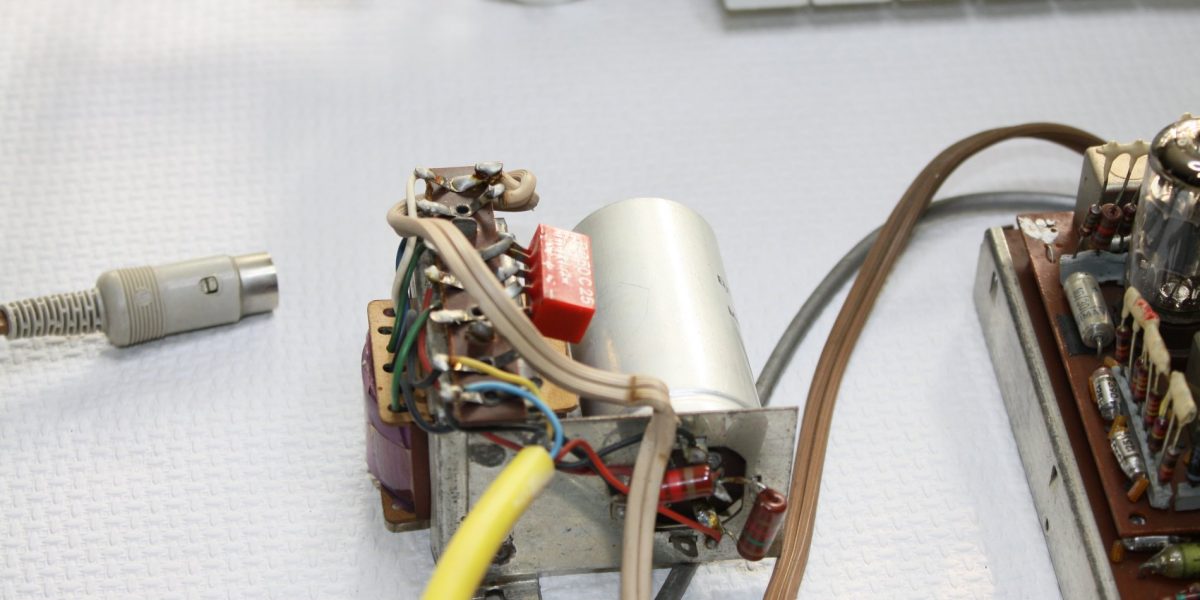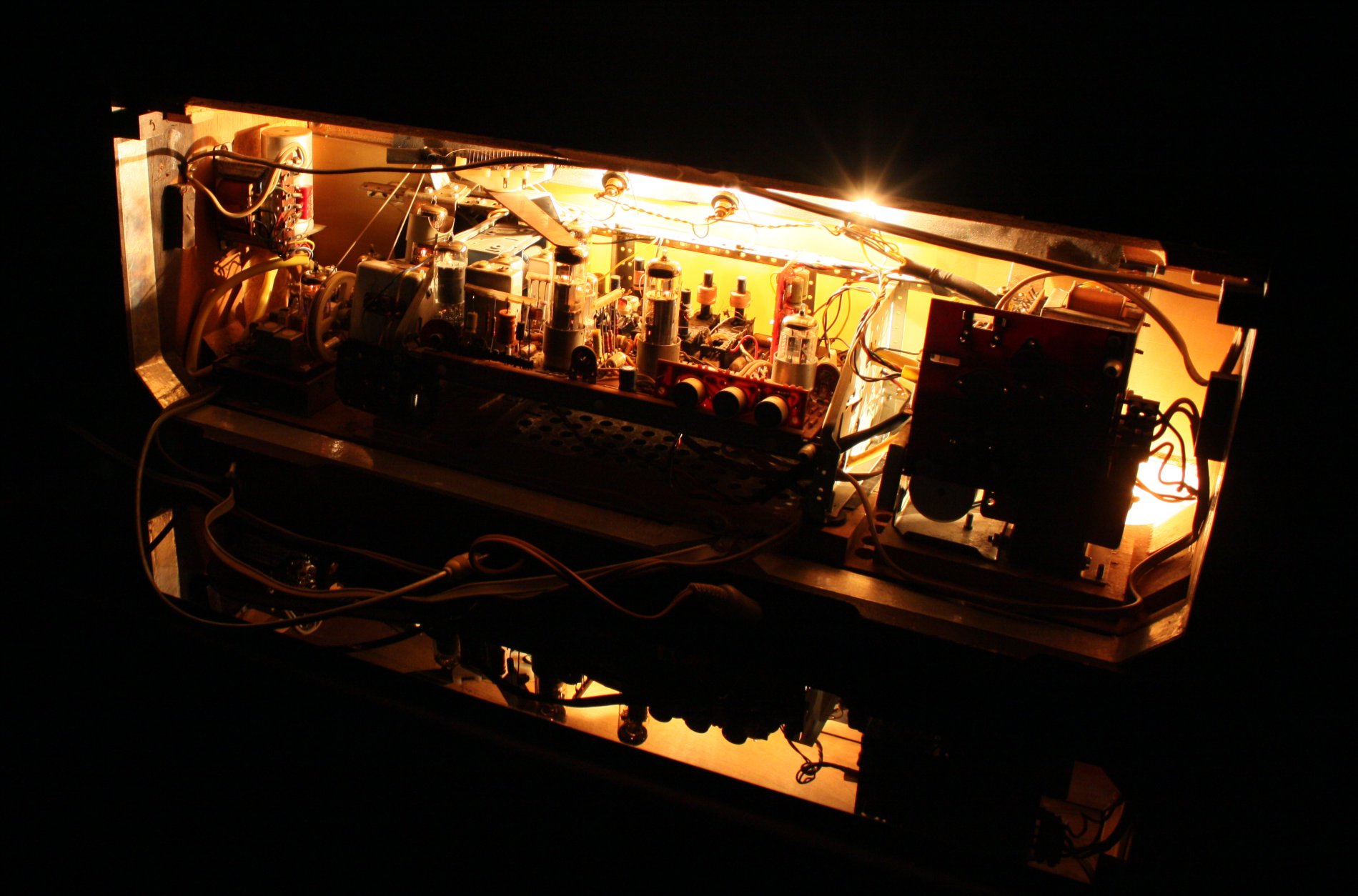 german radios - cn
german radios - cn
 german radios - cn
german radios - cn
 german radios - cn
german radios - cn
 opus 55 ts - cn
opus 55 ts - cn



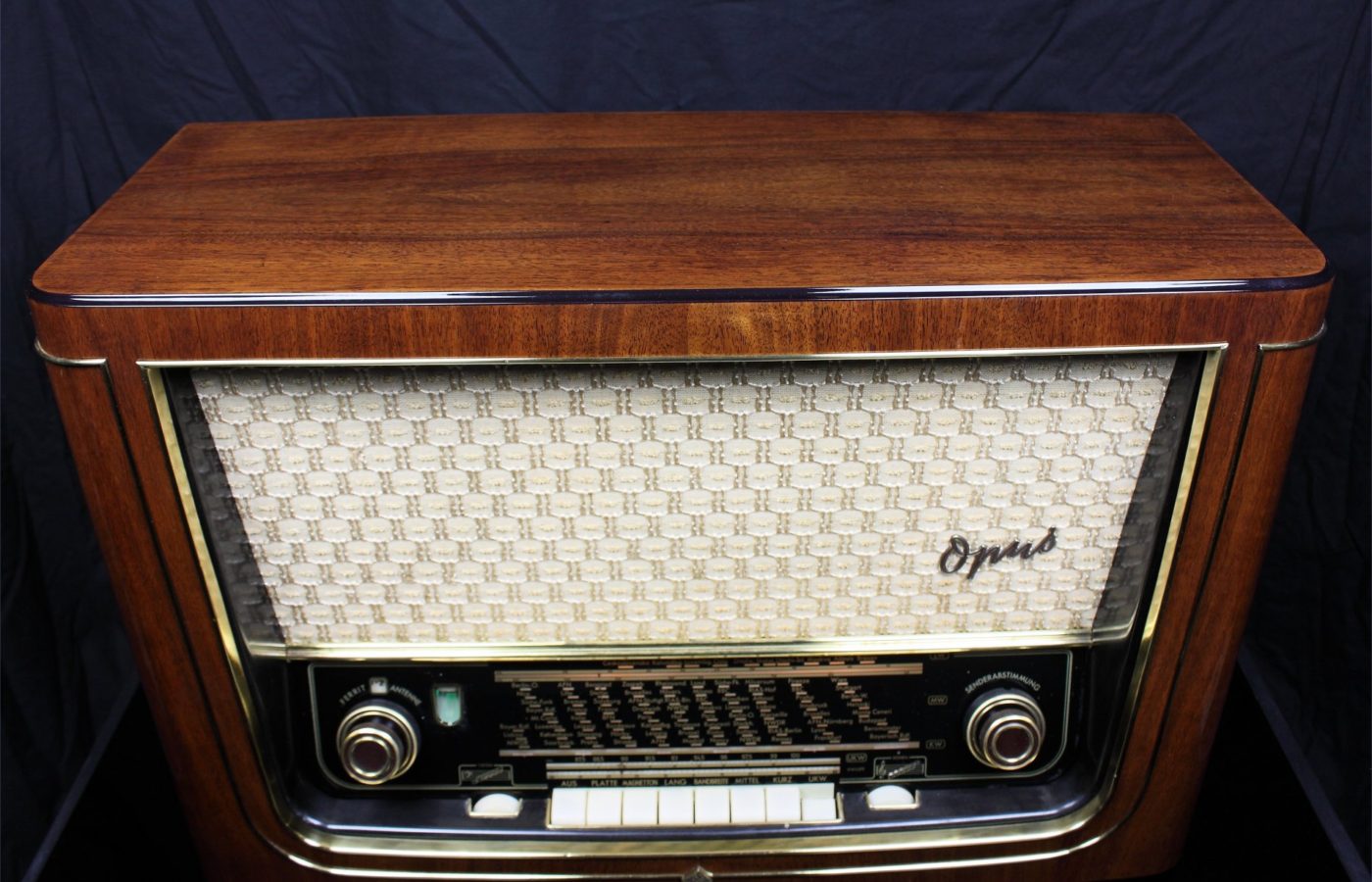


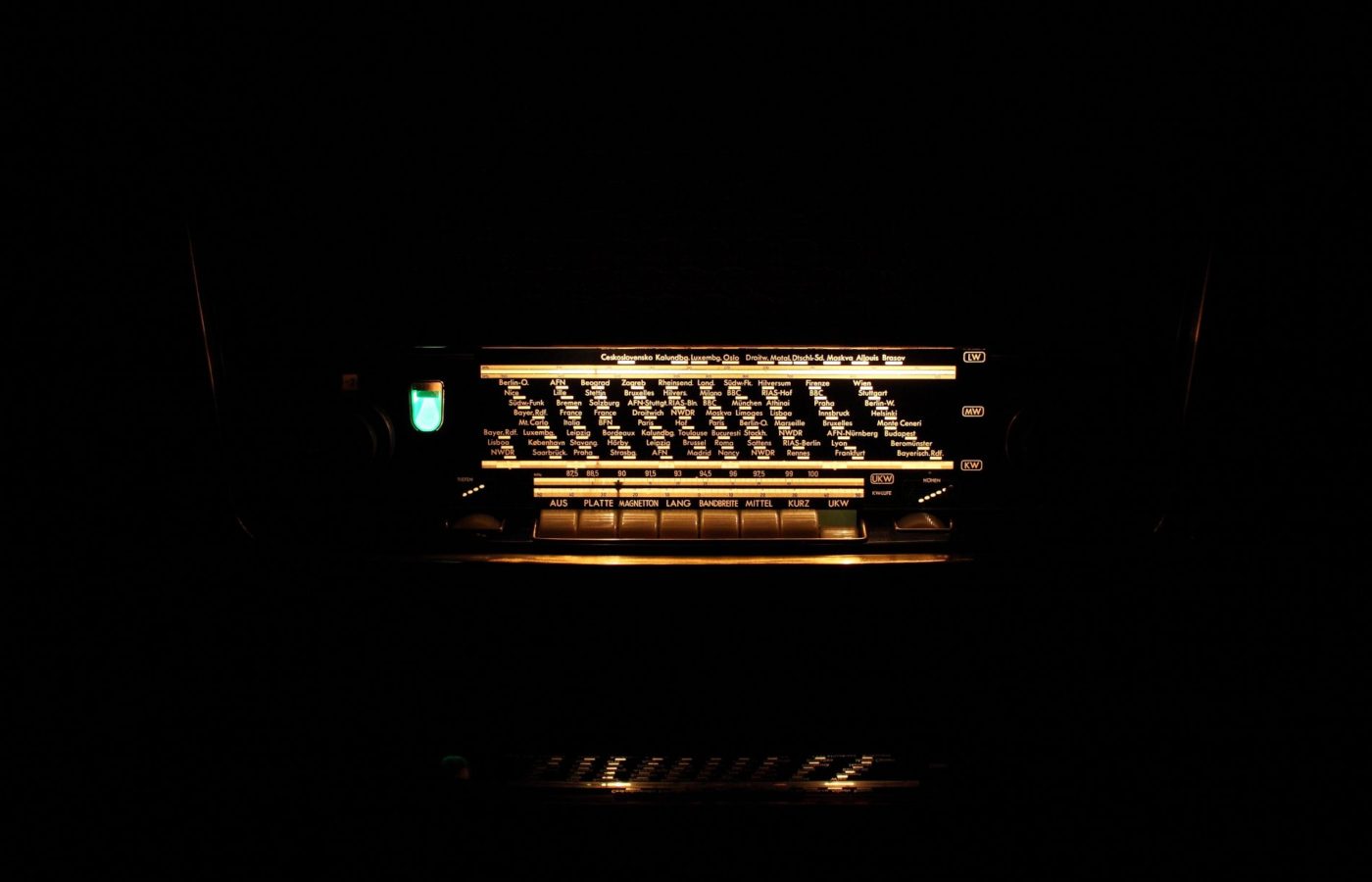





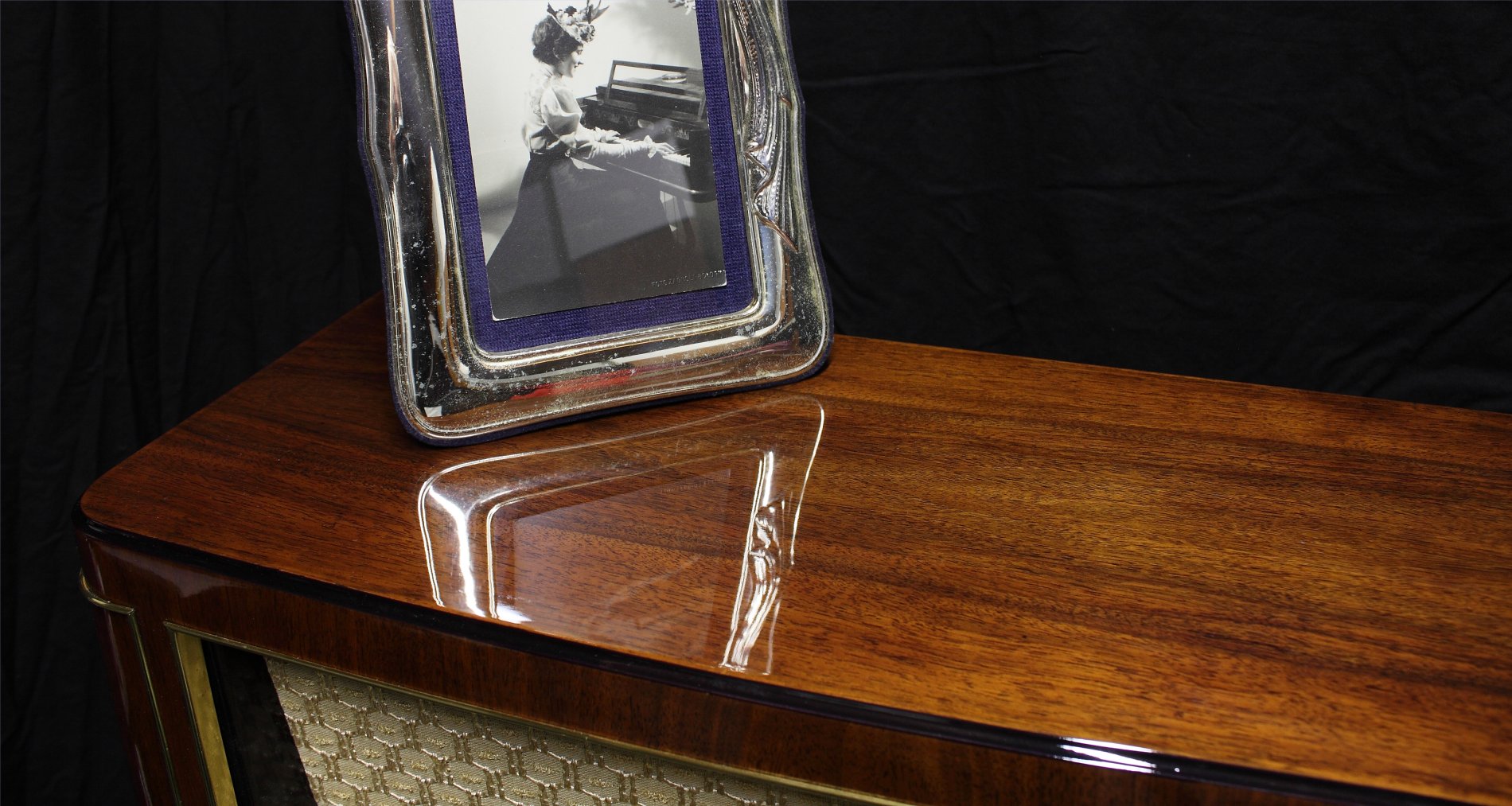
Designed and created in 1954, the OPUS 55 TS was the flagship model of the entire Telefunken production for the years 1954-55.
Since 1949, Telefunken decided to distinguish by the name “OPUS” the radio models at the top of their production. In fact, the first Opus model is the 1949 OPUS 49. This denomination remains until 1978, when the last Opus model, the 7050 HI-FI, is produced. In the following years the different models will be distinguished by alphanumeric abbreviations, such as TR550 and such.
The restoration of this device was very challenging, as the chassis had been cannibalized. As a matter of fact, potentiometers, tube sockets, many components, wires were missing and the HF coils had been torn. In short, the device was in terrible conditions. But a machine like this deserved a much more glorious end and the final result proved us right.
The amplifier stage has been literally rebuilt, the very fine wires of the high frequency coils have been reconnected through a very meticulous work.
The phases of this challenging restoration are documented with photographs, which can be seen at the end of the page in the dedicated section.
The declared output power was 15W but judging by the scheme and the voltages it must deliver about 10.
The good amount of power delivered and the high efficiency of the 6 loudspeakers allow the Opus 55 to successfully sonorize large rooms.
The double medium frequency stage, the complex feedback network, the push-pull output stage make it a classy and elegant radio. The configuration of this device will remain pretty much unchanged also in the following models, until the transition to the production of stereophonic models.
The devices of the Opus series are still among the most wanted by collectors for their extremely high quality standard.
The songs in the playlist highlight the incredible virtuosity of the performers. All these tracks were chosen specifically to put the device to the test. Below is a brief description.
- The first song proposed is a flamenco. Inspired by Playa la Barrosa in Cadiz, Spain, it was composed and interpreted by Paco de Lucia. The talent of the Spanish Maestro makes flamenco enjoyable even for those approaching this peculiar musical genre for the first time.
- With the second track we fly to Paris to meet the Russian-Israeli trumpet player, Sergei Nakariakov. Known as “the Paganini of the trumpet”, Nakariakov's work is fascinating because it continuously experiments with transcriptions of songs composed for other instruments, such as the song proposed here, “Moto perpetuo”, written for violin by Paganini himself.
- The third song, known as “Vento d'inverno”, ranked as op.25 no.11 is a technical study written by F. Chopin in 1836. This study was specifically written with the purpose of developing technique and endurance. It deserves to be seen played live, as it is truly disconcerting. However, Chopin did not mean to impress his listeners with the demonstration of his skills, but he believed his fingers to be “handmaidens of his soul” and with his soul he wanted to be heard, not with ears (H. Heine).
- The fourth track is a 1987 song taken from the album “Surfing with the alien” by guitarist Joe Satriani. An album that was recorded on the cheap, with a very limited budget, the three guitars used by Satriani were modified by him and electronic instruments were used to simulate many drum effects. However, the album was extremely successful thanks to Satriani's skills and creativity. The proposed song is a remastered edition of 2014.
- The last track, “Drum solo”, is a live recording of a performance by Daniel John Erlandsson (Malmö, 1976). Erlandsson is a Swedish drummer, who became successful with the metal band Arch Enemy. It is characterized by a very precise ritmica suono that mixes classic metal passages with the death-metal typical of his band. The song is undoubtedly exciting even for the non-lovers of the Metal genre.





1903 To prevent the English Marconi Company from having a monopoly on wireless transmissions,,Kaiser Wilhelm II orders the company AEG and Siemens to set up a joint venture to develop wireless telegraphy in Germany. It was established under the name of Gesellschaft für drahtlose Telegrafen mbH.
1923 The company name is changed to Firmierung in Telefunken, Gesellschaft für drahtlose Telegrafen mbH. Abbreviated as Telefunken, where Tele means Telegraph and Funken means "Lightning" in the sense of being fast and immediate.
1930 Production gradually moves from military and Government equipment to the production of consumer appliances. During this period, Telefunken enters the market of radio-television, recorders and etching of records.
1930 As radio transmissions are now needed not only to transmit telegraph messages, but also true music and speech broadcasts, it becomes necessary to introduce the concept of sound compression, to avoid continual volume level changes of the radio. Telefunken designs and produces the U3, the first compressor for transmitting stations in the world,. TheU73b, as seen in the picture, represents the evolution of previous models—it allows you to change the compression level, the release times and the attack times.
1941 All Telefunken’s actions are transferred to AEG, which effectively becomes the sole owner of the trademark Telefunken, its factories and patents.
1948 Germany is not invited to the Copenhagen Conference, where the division of Medium and Short Wave radio frequencies of Central Europe is decided. The war has just ended, and officially Germany isn't considered as a technologically important nation. Because of this, Germany decides to develop FM broadcasts even if the quality of the transmissions is considerably higher than those in the AM. At this time, Telefunken develops the V72 microphone/amplification system and its evolutions, intended to be used in all German broadcasters and most European ones too, as well as at the most important recording studios, such as EMI, Decca, Telefunken, etc.
1955 The company becomes Telefunken GmbH.
1967 Telefunken is joined with AEG and the company becomes ‘’AEG-Telefunken’’.
1970 Poor management causes the company to lose market shares. AEG begins to outsource entire business segments and make constant rearrangements.
1985 Daimler-Benz AG buys what remains of AEG-Telefunken.
1996 The name Telefunken is cleared and all activities related to audio products stop.
Today The company name has been renewed in Telefunken Holding AG. Telefunken and its use worldwide are responsible for the name. In United States Telefunken USA buys the rights to build and market worldwide original microphones and some audio equipment under the brand Telefunken Elektroakustik.
The original company that helped spread the music throughout the world doesn’t exist anymore.
Year of production: 1954/55
Superheterodina IF 460/10700 8 Circuiti AM 11 Circuiti FM
Wavebands:
Medium Waves (OM), Long Waves (OL)
Short waves (OC), FM (UKW)
VOLTAGE (AC) 110; 125; 160; 220 Volts
6 Loudspeakers
2 Main Mid-Woofer
2 Front electrostatic Tweeters
2 Cone Tweeters on sides
Dimensions (LHD): 640 x 420 x 280 mm / 25.2 x 16.5 x 11 inch
Net weight: 15,7 Kg
9 Tubes: ECC85, ECH81, 2 x EF89, EM80, EABC80, EC92, 2 x EL84
Rotating ferrite antenna for AM bands
This device is equipped with a set of 6 loudspeakers.
Only the Saba Freiburg 14, the Nordmende Tannhauser 59 and some later models of the Opus series are equipped with the same number of loudspeakers. All other German radios, even top-quality ones, have 5 loudspeakers at most.
In the front we find two wideband loudspeakers and two electrostatic tweeters. These loudspeakers are very directional so they are fixed to a prism structure that directs them so that the resulting spread angle is as wide as possible.
Two 10 cm cone tweeter are placed on the sides, cut with a 6 dB/oct filter so that along with the treble they also reproduce medium-high frequencies. The whole audible spectrum is then spread evenly in all directions, granting the listener a complete freedom of movement.
The frontal loudspeakers visible in these photos are not Telefunken originals. All the other loudspeakers are original.
The tuning system is interesting and different than other devices made in Germany. The device is equipped with separate tuning mechanisms for AM and FM bands. There are two tuning knobs, separate but coaxial, with cable and pulley systems separated depending on the band. This type of tuning has a very strong mechanics.
Regarding maintenance, cleaning and lubricating once every 10 to 15 years is sufficient.
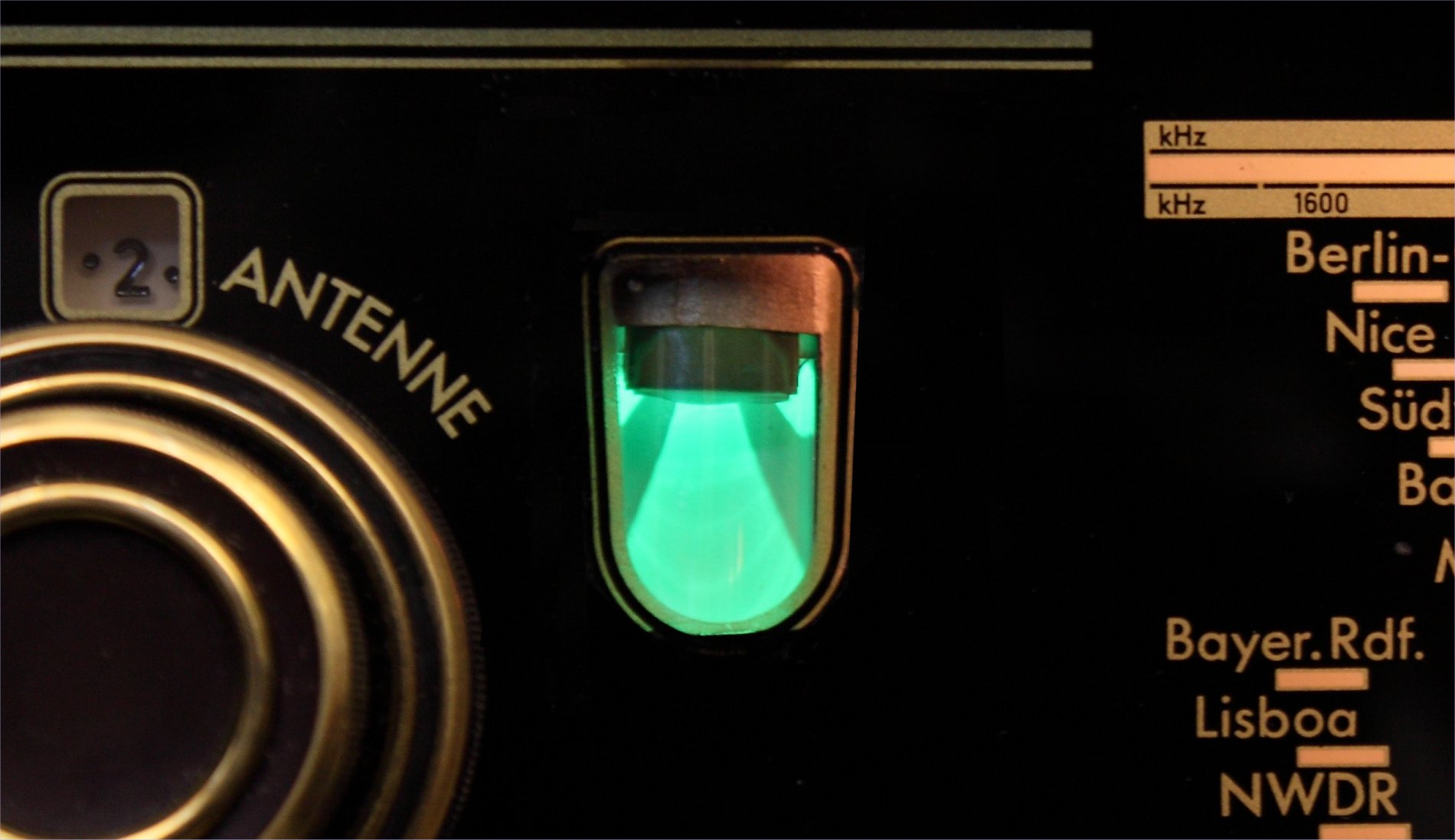
调谐指示当然已经被更换

To the right is the volume controls (with built-in loudness)
On the same axis the larger knob controls the position of the Ferrite Antenna. A small window indicates its position.
Then we find the Magic Eye, which indicates the perfect tuning position for each station.
Just below there’s the Bass control knob. On the staff the notes change color depending on the position of the knob.
At the top we can find the dial glass.
Below, in order,
AUS - OFF
PLATTE - Turntable
MAGNETTON: Tape Recorder
LANG - LW (long wave),
BANDREITE - Bandwidth control in AM
MITTEL - MW (medium wave)
KURZ - KW (shortwave)
UKW - FM
Finally there are AM/FM coaxial Tuning knobs.
Below, you can see the high-tone control knob with its indicator.





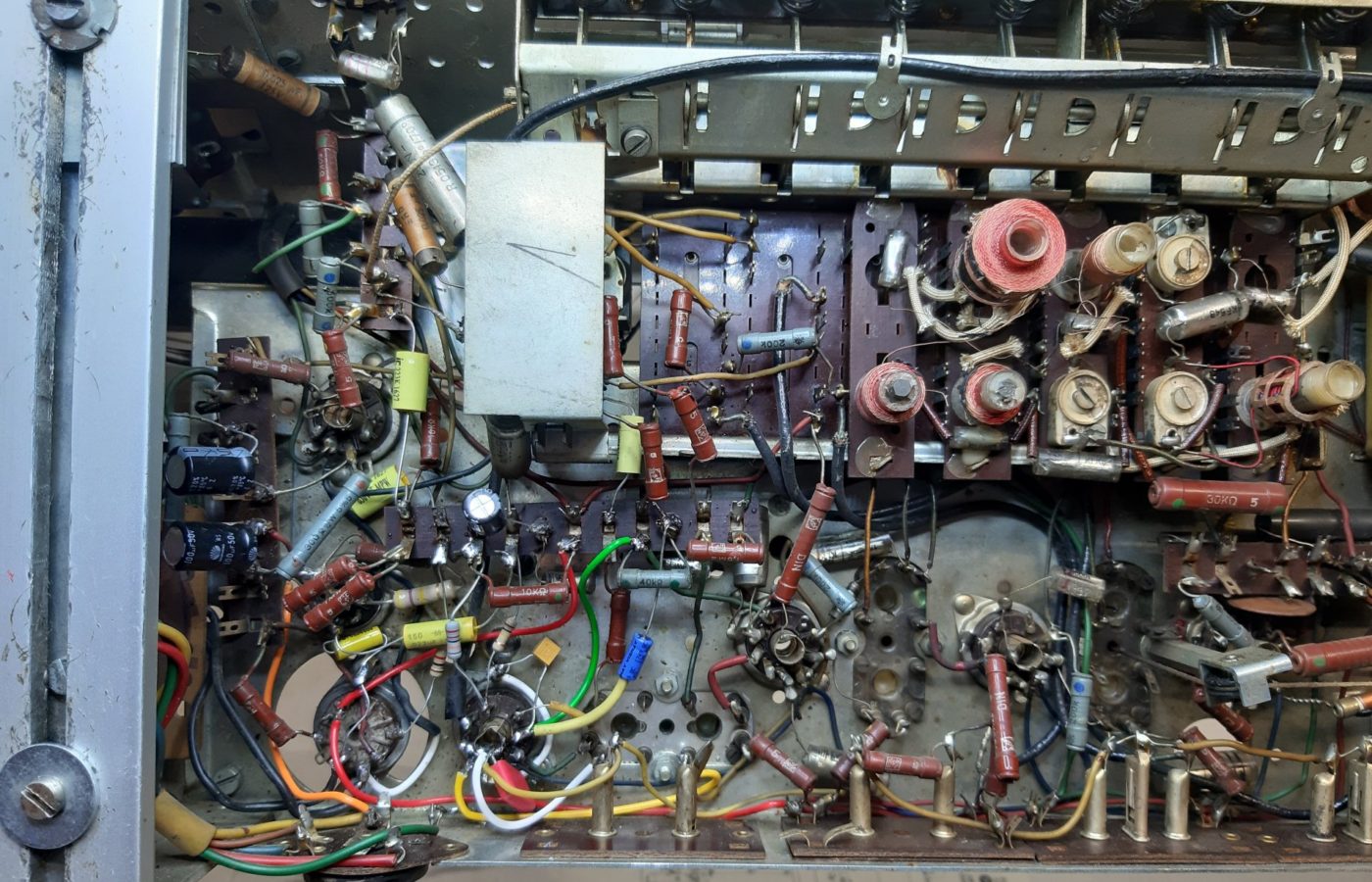

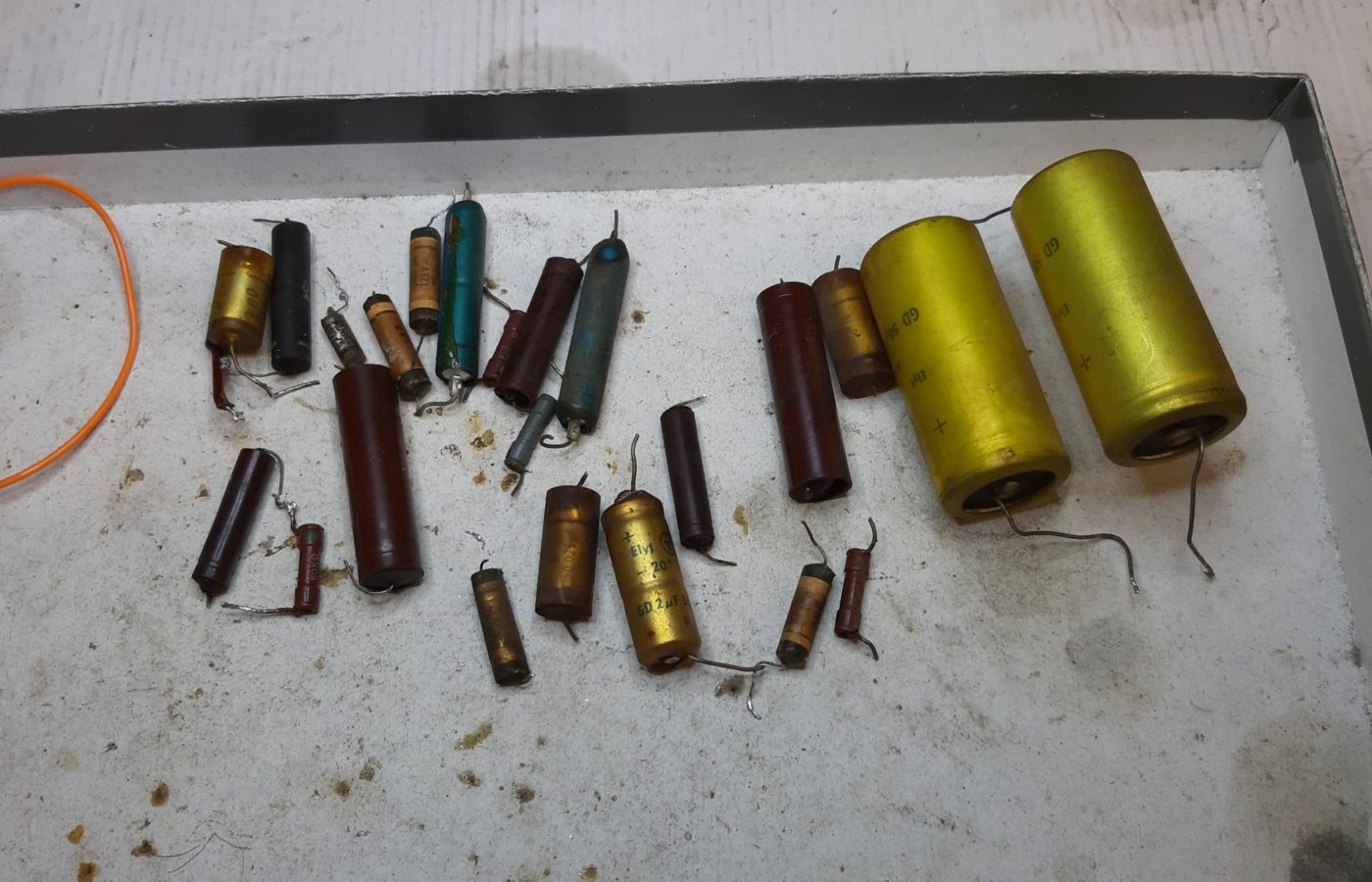









 german radios - cn
german radios - cn
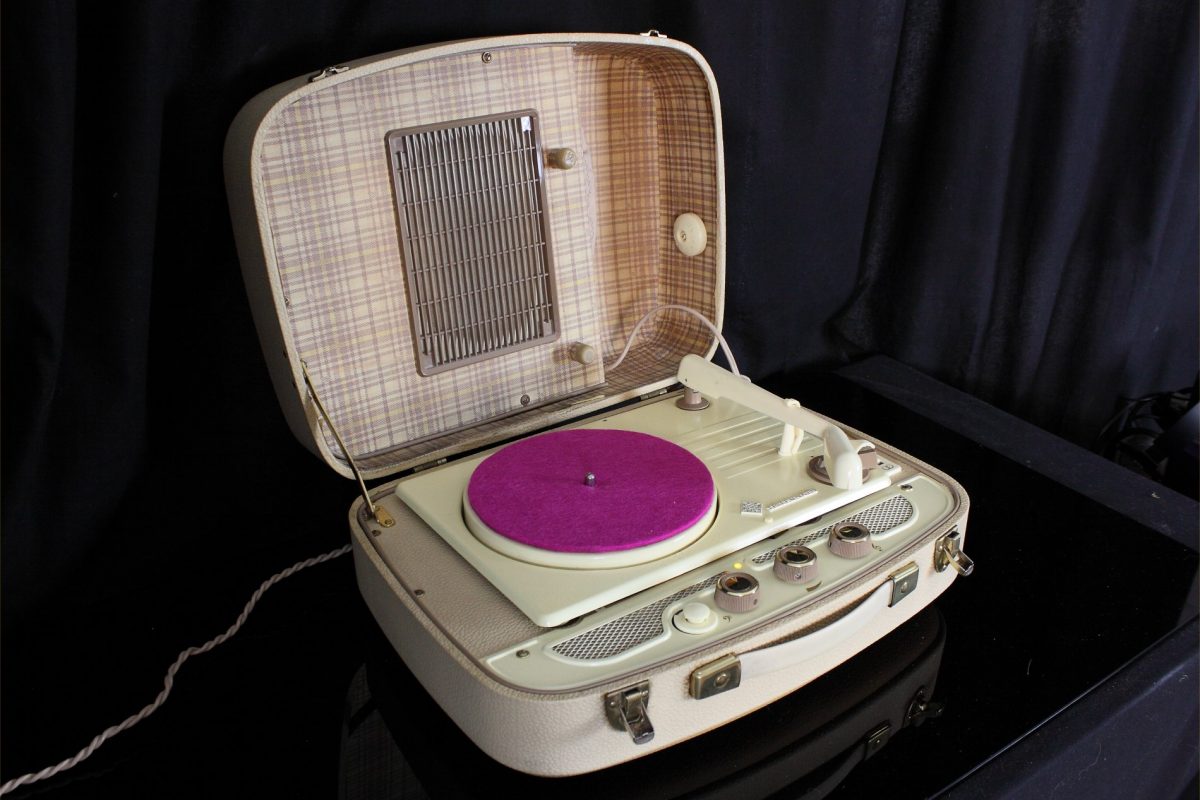
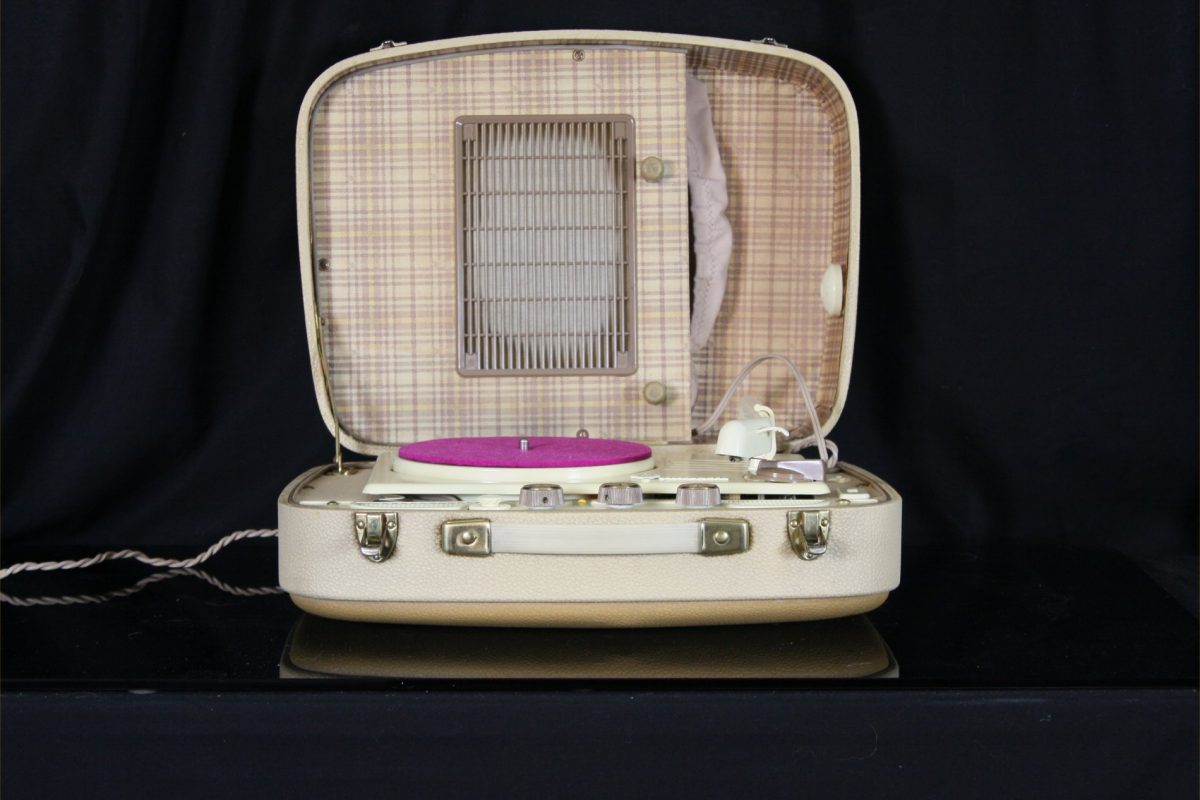






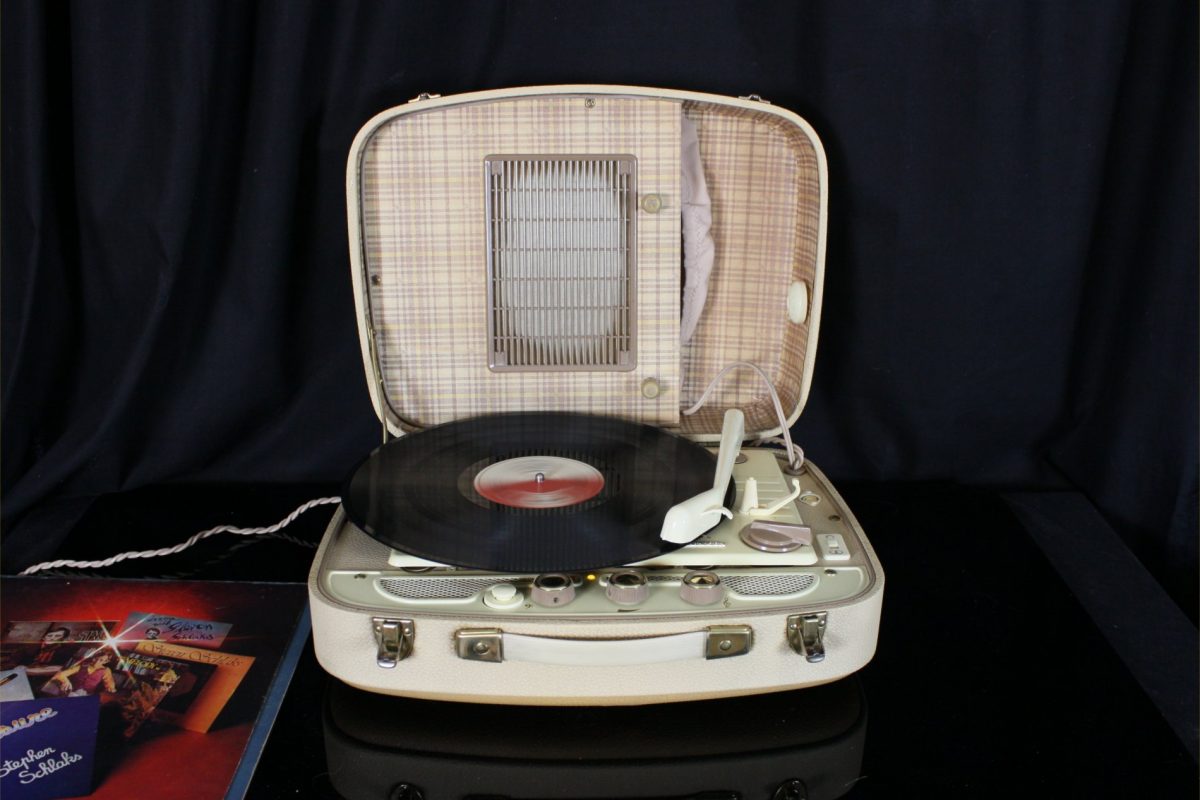


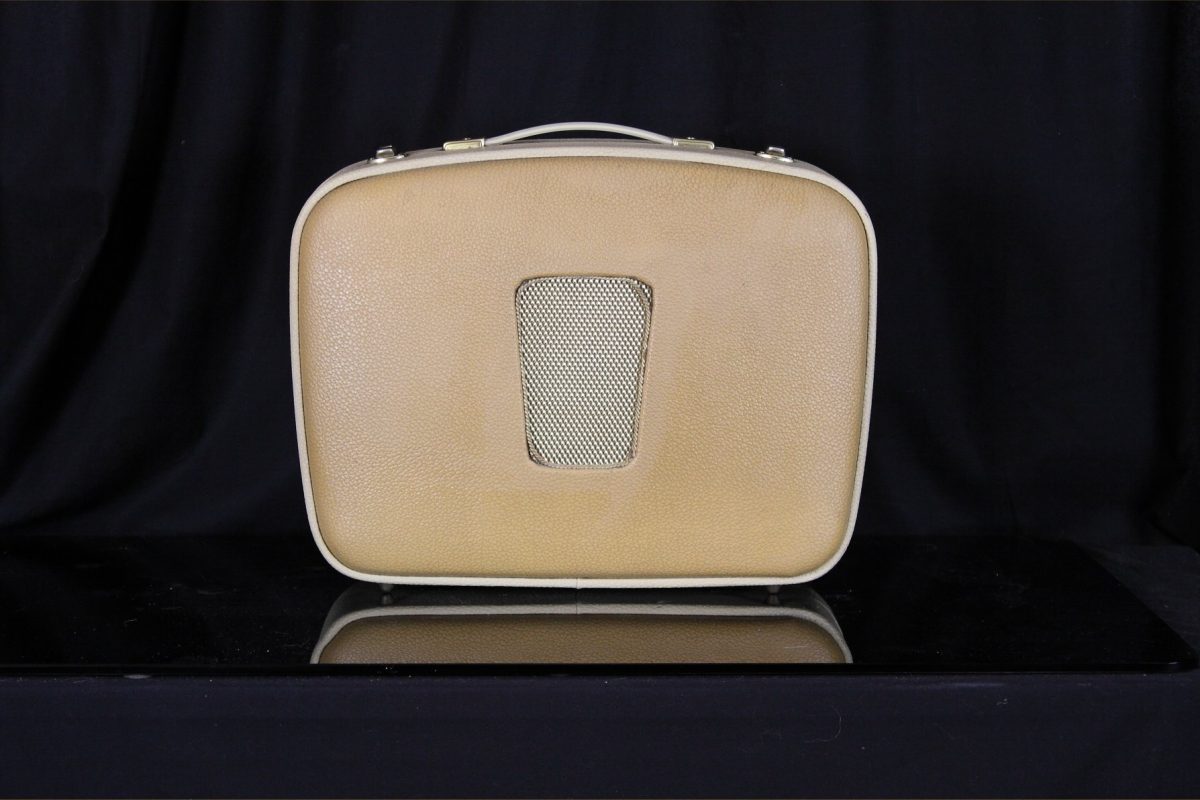
The Telefunken Musikus 5SV is one of the best portable record players built in Germany between 1960-1961.
The mechanical part is comprised of a robust Telefunken belt record player.
The record player is equipped with automatic antiskating set at the factory. It can play discs at 16/33/45/78 rpm.
It is not automatic for which the mechanics are very simple, robust and silent.
It can assemble monophonic or stereo stylus.
The electronics are established from an ECL82 polarized in A-Class.
The triode section of the ECL82 is used as a preamplifier. Between the preamplifier stage and the final stage there are separate tone controls for acute and bass.
Interestingly, the physiological control of the volume consists in three separate levels which intervenes in succession to the volume decreasing.
That physiological control is applied to both potentiometer sections. Another important feature is the ability to connect to an external amplifier, with its loudspeaker, to listen in stereophonic mode.
The traditional use is to connect the output of this record player to the input of a radio.
It is enough to turn the stylus and the Stereo/Mono switch to the Stereo position.
In this way, one channel will be audible from the loudspeaker of the portable record player, the other channel will be audible from the radio’s loudspeaker.
Activating the volume knob of the portable record player, it will act simultaneously on both channels.
The tone controls of the two devices remain separate and independent.
The listening in Mono does not require any additional equipment.
The sound is typical, substantial, sweet and obviously relaxing.
The acute tones are brilliant and the bass is quite quietly present …..within the limits imposed by the laws of physics.
A beautiful portable stereo player with the final stage “Single Ended” in A-Class, enclosed in very refined furniture.
An object which you can enjoy the transmissions of times past.
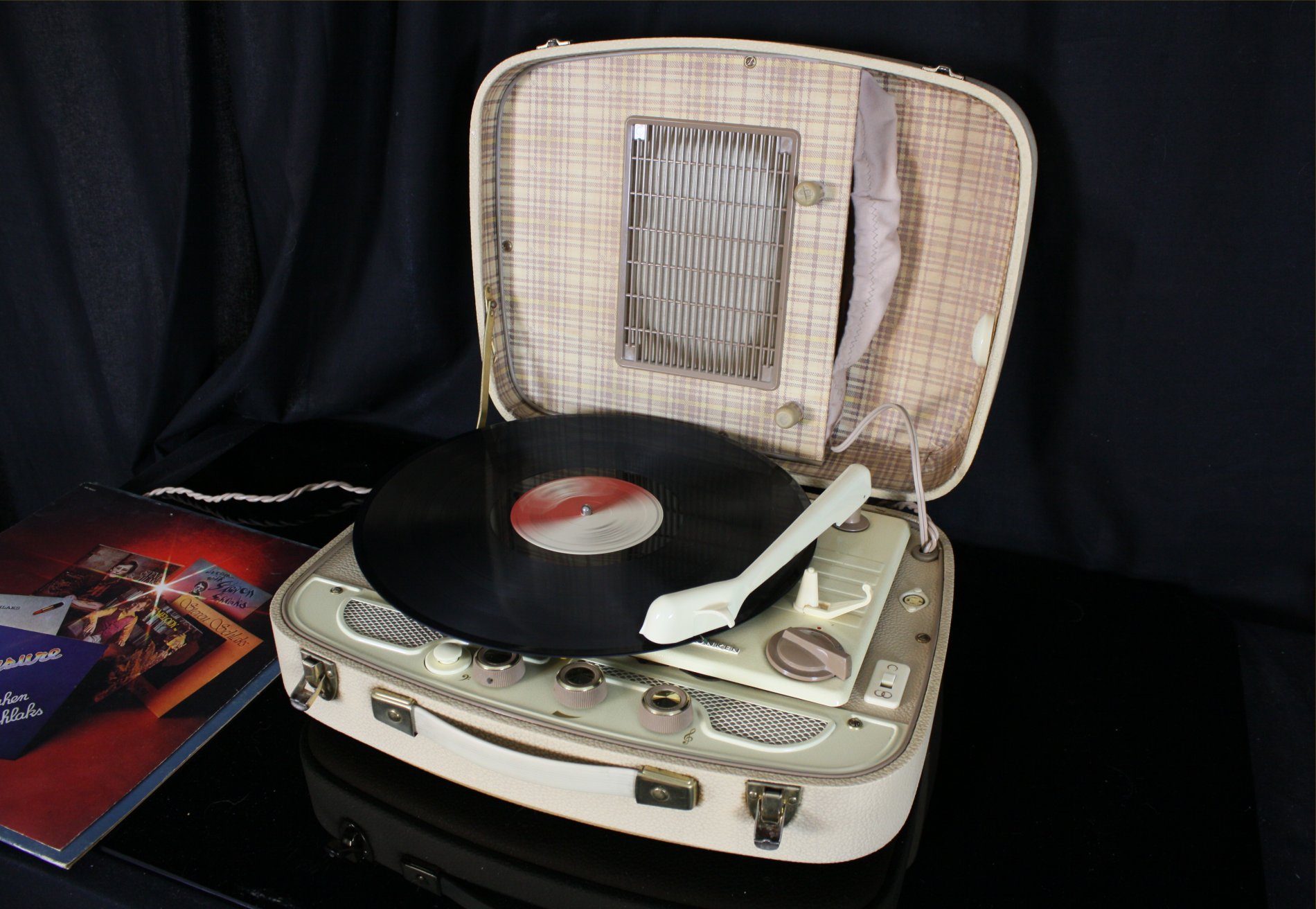



1903 To prevent the English Marconi Company from having a monopoly on wireless transmissions,,Kaiser Wilhelm II orders the company AEG and Siemens to set up a joint venture to develop wireless telegraphy in Germany. It was established under the name of Gesellschaft für drahtlose Telegrafen mbH.
1923 The company name is changed to Firmierung in Telefunken, Gesellschaft für drahtlose Telegrafen mbH. Abbreviated as Telefunken, where Tele means Telegraph and Funken means "Lightning" in the sense of being fast and immediate.
1930 Production gradually moves from military and Government equipment to the production of consumer appliances. During this period, Telefunken enters the market of radio-television, recorders and etching of records.
1930 As radio transmissions are now needed not only to transmit telegraph messages, but also true music and speech broadcasts, it becomes necessary to introduce the concept of sound compression, to avoid continual volume level changes of the radio. Telefunken designs and produces the U3, the first compressor for transmitting stations in the world,. TheU73b, as seen in the picture, represents the evolution of previous models—it allows you to change the compression level, the release times and the attack times.
1941 All Telefunken’s actions are transferred to AEG, which effectively becomes the sole owner of the trademark Telefunken, its factories and patents.
1948 Germany is not invited to the Copenhagen Conference, where the division of Medium and Short Wave radio frequencies of Central Europe is decided. The war has just ended, and officially Germany isn't considered as a technologically important nation. Because of this, Germany decides to develop FM broadcasts even if the quality of the transmissions is considerably higher than those in the AM. At this time, Telefunken develops the V72 microphone/amplification system and its evolutions, intended to be used in all German broadcasters and most European ones too, as well as at the most important recording studios, such as EMI, Decca, Telefunken, etc.
1955 The company becomes Telefunken GmbH.
1967 Telefunken is joined with AEG and the company becomes ‘’AEG-Telefunken’’.
1970 Poor management causes the company to lose market shares. AEG begins to outsource entire business segments and make constant rearrangements.
1985 Daimler-Benz AG buys what remains of AEG-Telefunken.
1996 The name Telefunken is cleared and all activities related to audio products stop.
Today The company name has been renewed in Telefunken Holding AG. Telefunken and its use worldwide are responsible for the name. In United States Telefunken USA buys the rights to build and market worldwide original microphones and some audio equipment under the brand Telefunken Elektroakustik.
The original company that helped spread the music throughout the world doesn’t exist anymore.
Year of production: 1963
VOLTAGE (AC): 110; 125; 160; 220 Volts
Loudspeaker Larga banda frontside magnet
Dimensions (LHD): 410 x 170 x 310 mm / 16.1 x 6.7 x 12.2 inch
Net weight: 4.5 kg / 9 lb 14.6 oz
1 tube: ECL82
Cartridge T20 - T20/2
Speed 16/33/46/78 rpm
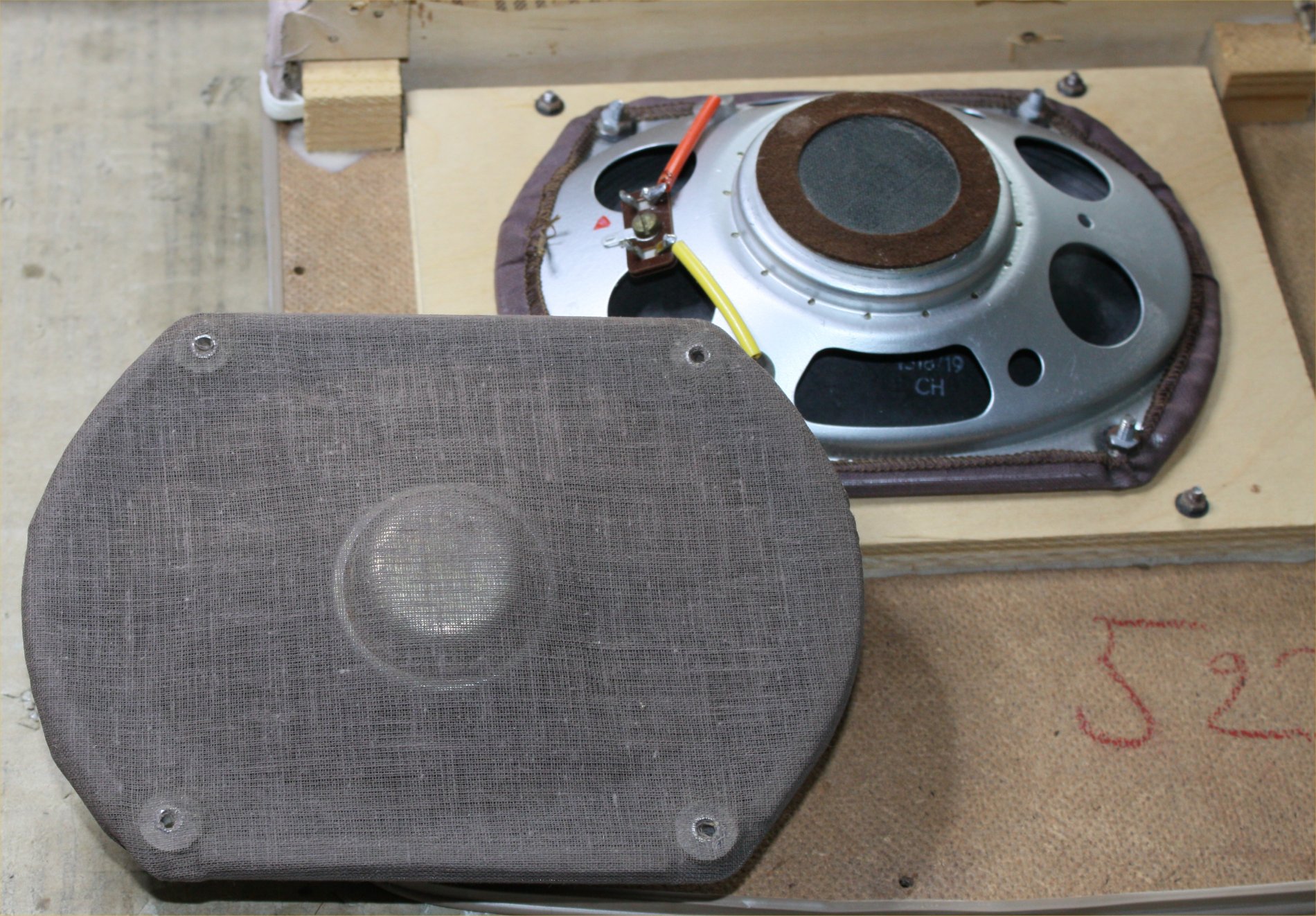
The loudspeaker of this device is very interesting.
Since it has been placed on the top of the lid of the cabinet, it has been necessary to contain the depth.
To do this, the magnet and the reel have been moved to the front of the speaker, in front of the cone.
The cone curvature is also minimized.
With these clever solutions the depth has been limited to a few inches.
The frequency response of a loudspeaker with the profile is shifted to the acute, which is really brilliant.
The cabinet built on the lid, allows the low range to be emphasized, so at the end the frequency response is rather linear.
Another important feature, that reveals the class of this device, is the tone control circuit, which consists of two separate sections for high and low frequencies.
Somewhat different to the circuits usually used in German production, here the controls are independent from the volume control position.
These controls act naturally only on the internal amplifier, not on that additional amplifier.


In the photo, on the left you can see the 3 poles DIN socket, to which it is possible to connect an additional amplifier, as specified in the presentation of the device.
When the switch is in the Mono position (a circle) on both amplifiers the internal one and the additional one, the same signal arrives.
When the switch is in the Stereo position (two circles) to the two amplifiers the signal arrives separately in the two channels. This is controlled by the volume potentiometer which consists of two equal sections.

The first command you can see to the left is the voltage changer. It should only be used at the beginning to adjust the voltage of the record players’ operation to that of the network.
Then, it must no longer be touched.
The second command is the control of low tones of the internal amplifier, to follow the potentiometer of the volume (of both channels)(di entrambi i canali)
and finally, the acute tones control knob.
Above you can see the big knob of the speed control of the record player.
At the end, the Mono/Stereo switch and the output for an additional amplifier.


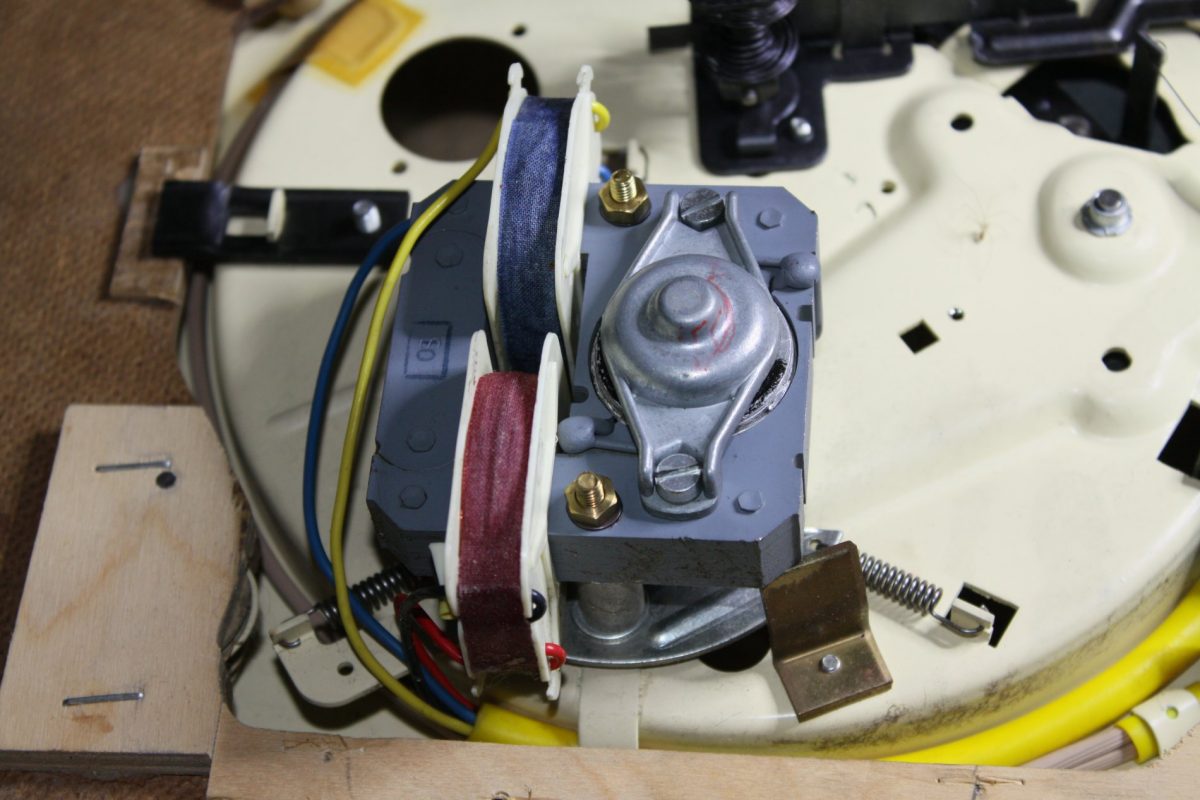





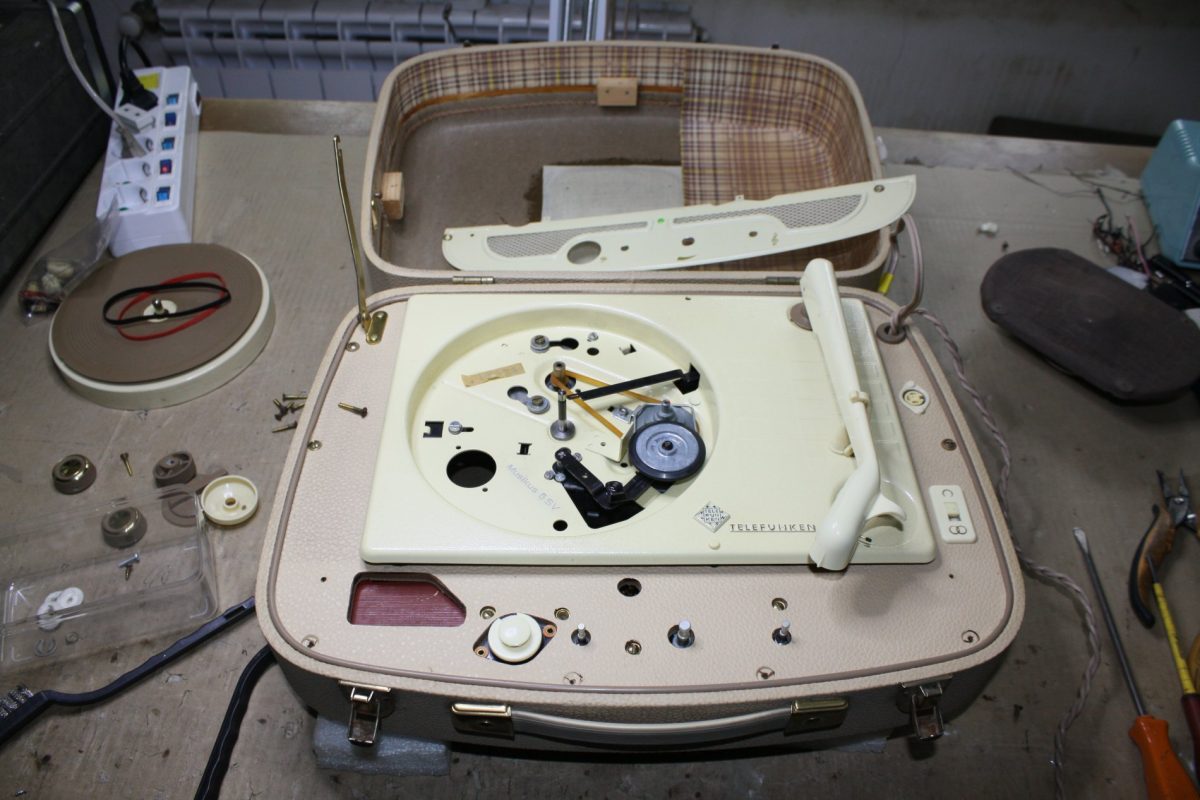
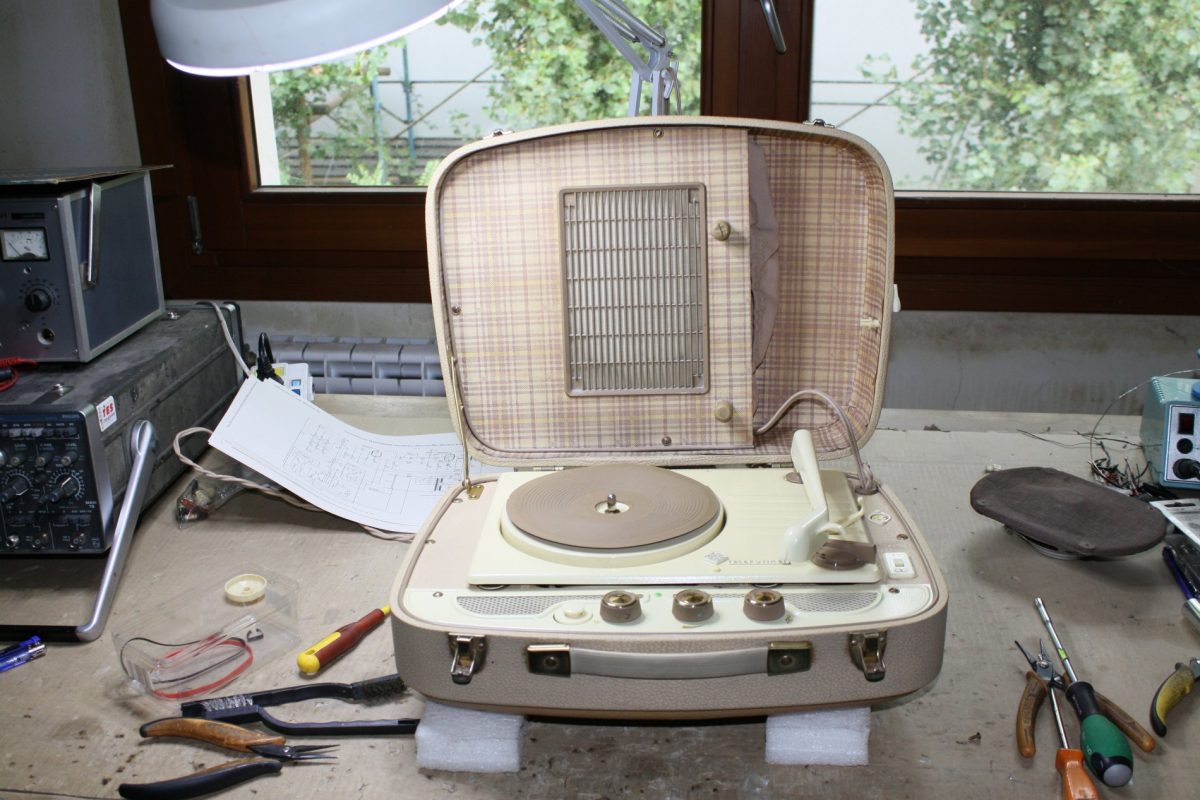
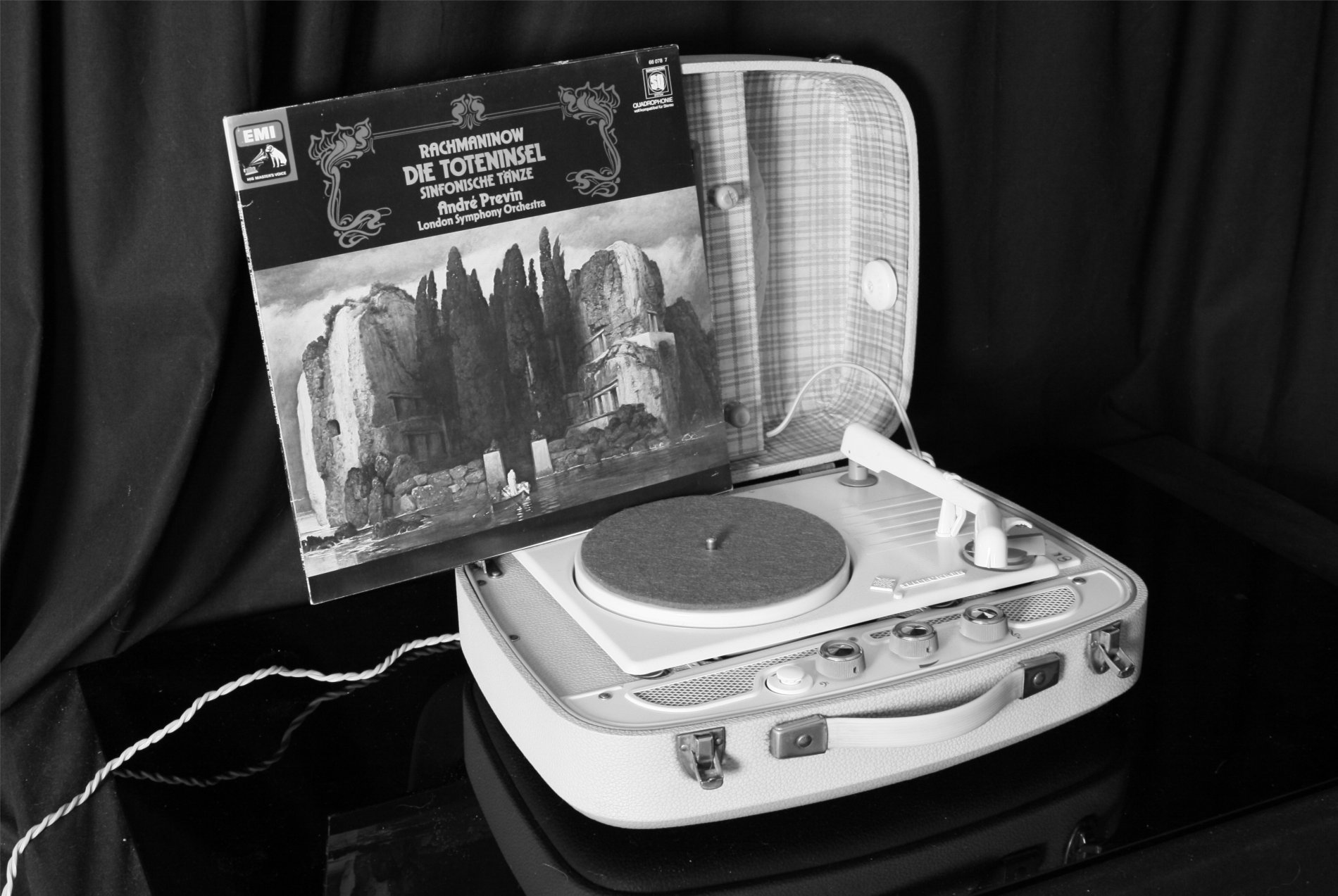
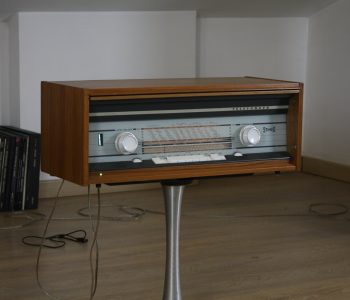 german radios - cn
german radios - cn






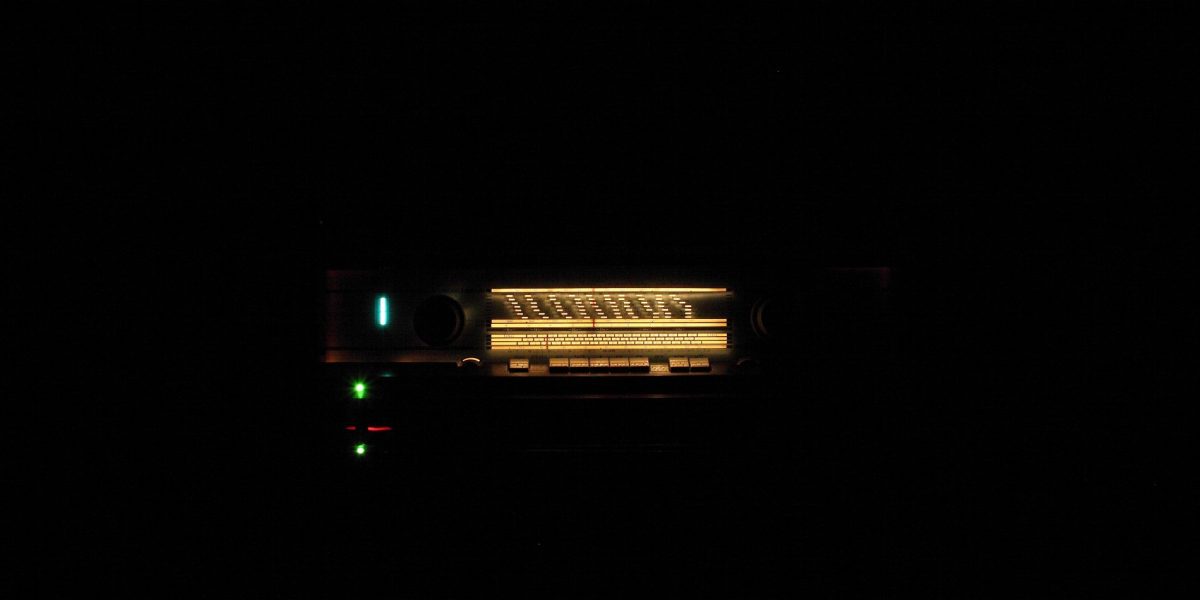







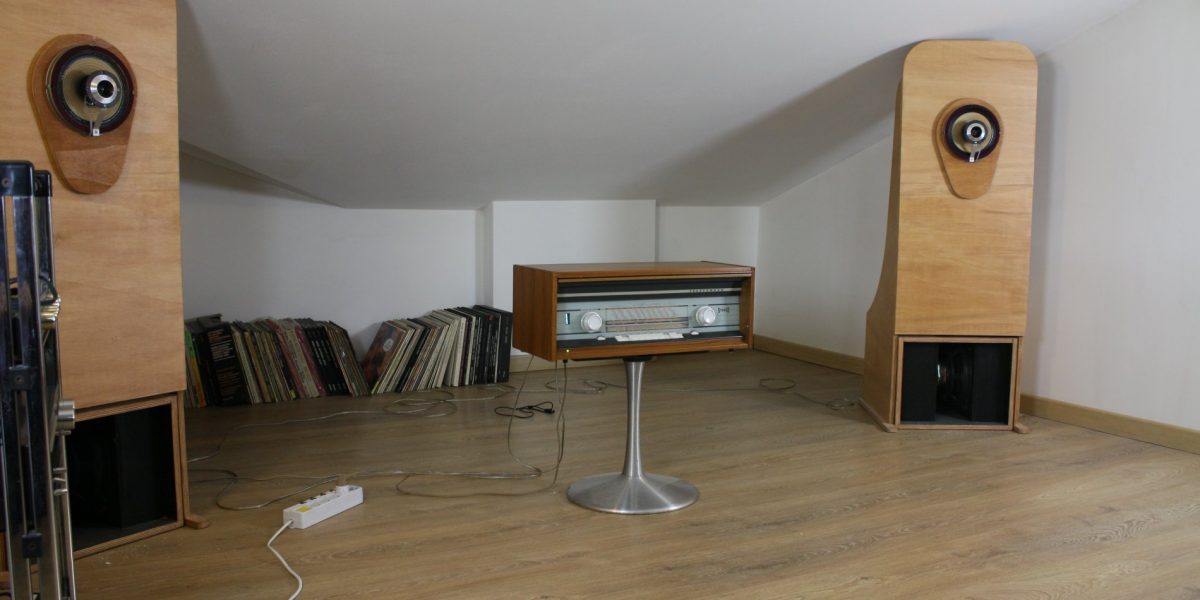



大约在60年代初期,德国最大的制造商把我们现在称之为“接收器”的产品推向市场。他们称之为Steuergerät,即电子控制单元。Telefunken(德律风根)Concertino Steuergerät 2380就是一个这样的设备。
德律风根生产两类的steuergeräT,分别配置A级输出和AB级输出。Concertino 2380属于A级输出,Opus 2430和后来的Opus 2550则属于AB级输出。
Concertino和Opus 2550具有相同的尺寸,相同的外壳。Opus机型输出更强大一些,每频道7 W,而Concertino每频道4 W。但4W在A级输出具有其特殊性的:它的优点是失真度小,信号越小传真度越高。因其高传真度,部分高级音响器材仍采用A級放大器。
Opus和Concertino的另一个很大的区别是,Opus设计了一个嵌入式的立体声解码器,雖然在Concertino解码器是选购的。但我们所有的Concertinos都是配备了立体声解码器。
Concertino最终管是著名的ECL86。这种双重管由一个三极管作为前置放大器,和一个五极管作为功率输出。
我们经常可以发现这种管使用于精制的放大器中,如Bang & Olufsen 608或Scott Stereomaster 200B。
Concertino 2380配备了超大的输出变压器以防止空气间隙达到饱和。此外,超大形的电源供器,你可以在图片中看到。
该电路还提供了负反馈,保证其线性度。
前置放大器有一个音量和音调控制( 高音和低音分离的控制 )。
还有两个移动式均衡器,进一步强调低音和高音。当该设备连接到频率反应不是完全线性的扬声器时,它们是非常有用的。
最后,声音是非常圆润和平衡的,正如你所期望的。你可以感知音符之间的空间。这电子管装置产生一个温暖的声音,正如预期的那样,但如果连接至有超高音喇叭的扬声器时,甚至会令人產生急躁感。
这种类型的设备有如此的声音质量真的是不可想象。由于该设备内置蓝牙,所以特别适合听”流媒体音乐”。这在我看来,是把它的使用最佳化。
一台配置单端A级放大输出的美丽立体声接收器,放进一个有价值的隐藏柜里。这是一个珍贵老式家庭高保真系统的组合。

- 独立式的扬声器 - 使用独立式的扬声器是立体声接收器的重要选择。这使您的接收器能够在最适合的特定空间连接扬声器,以达到设计或声学性能要求。最适合进行分析后的扬声器。
- 立体声解码器-它配备了 - 个集成立体声解码器。这允许您使用立体声传输系统收听电台。许多立体声接收器没有配备这种多路转换器,所以他们只有当选择录音机/唱片机/辅助输入时才会有立体声工作。这样的接收器在听收音机时,两频道发送相同的信号,所以听的是单声道。Concertino 2380不是上述的情况,而是完全超越立体声。
- 蓝牙接收器加装-该单位配备了一个蓝牙接收器,直接由收音机供应电源。这使得有可能控制放大器从任何外部数字设备作为一个iPad,智能手机,或一个复杂的多媒体站。所以你能无线听到您喜欢的网站或你的无损档案。无线接收器可根据要求选配。
– 多平台连接-一个定制的适应电缆连接任何数字设备,如iPhone,智能手机,笔记本电脑,CD播放器等将提供这台收音机。这种特殊的电缆适合现代设备和接收机之间的不同阻抗。此外,两个立体声信道流入一个不增加负载的输入单元。



1903年: 為了防止English Marconi公司对无线传输市场的垄断,Kaiser Wilhelm II命令AEG公司和Siemens公司成立一个合资企业在德国发展无线电报。以Gesellschaft für drahtlose Telegrafen mbH公司名称成立。
1923年: 公司更名为Firmierung in Telefunken,Gesellschaft für drahtlose Telegrafen mbH。简称德律风根(Telefunken),快速和直接的感觉:Tele是“电报”的意思, Funken则是“闪电”的意思。
1930年: 逐步从军事和政府设备的生产转到消费电器的生产。在这期间,德律风根进入收音机-电视,唱片机和唱片市场。
1930年: 当时无线电传输不仅需要传送电报信息,而且还需要真正的音乐和语音广播,因此有必要引入声音压缩的概念,以避免无线电音量的不断变化。德律风根设计并生产的U3,这是世界上第一个发射站的压缩机。图片所看到的U73b是由以前的机型演变而生,它允许你改变压缩程度、释放时间、启动次数。
1941年: 所有德律风根的一切均转移到AEG公司,AEG成为德律风根的唯一拥有者,包含其工厂和各项专利。
1948年: 德国没有被邀请参与哥本哈根会议,会议决定中欧的中波和短波无线电频率的区分。战争刚刚结束,德国不被认为是一个技术上重要的国家。正因为如此,德国决定发展FM调频广播,FM传输的质量大大高于其他国家的AM。在这个时候,德律风根开发出V72麦克风/放大系统及其衍生产品,适用于所有德国广播公司和大多数欧洲国家,以及最重要的录音棚,如EMI,Decca,Telefunken等。
1955年: 公司改成为德律风根公司( Telefunken GmbH )。
1967年: 德律风根与AEG公司合併,公司成为AEG-Telefunken。
1970年: 管理不善导致公司失去市场份额。AEG公司开始外包整个业务部门和不断重整。
1985 年: Daimler-Benz AG买下了AEG-Telefunken。
1996年: Telefunken被除名,並且音频产品相关的所有活动停止。
今天的公司名称更新为Telefunken Holding AG,并以此名称使用及负责于全球。在美国Telefunken USA买下权利并以Telefunken Elektroakustik品牌行销原有的麦克风和音频设备于全球市场。
帮助音乐传播至整个世界的原来公司已经不存在了。
生产年份:1963
超外差式收音机IF 468/10700 - 8 AM电路,12 FM电路.
Wavebands: 中波(OM),Long Waves(OL), 短波(OC),FM(UKW)
电压(AC)110;125;160;220伏特
外部扬声器
尺寸(LHD):650 x 255 x 270 (mm)
净重量:14公斤
8管: ECC85 ECH81 EBF89 EBC91 EM84 ECC83 2 x ECL86
AM调幅波段旋转铁氧体天线
立体声解码器
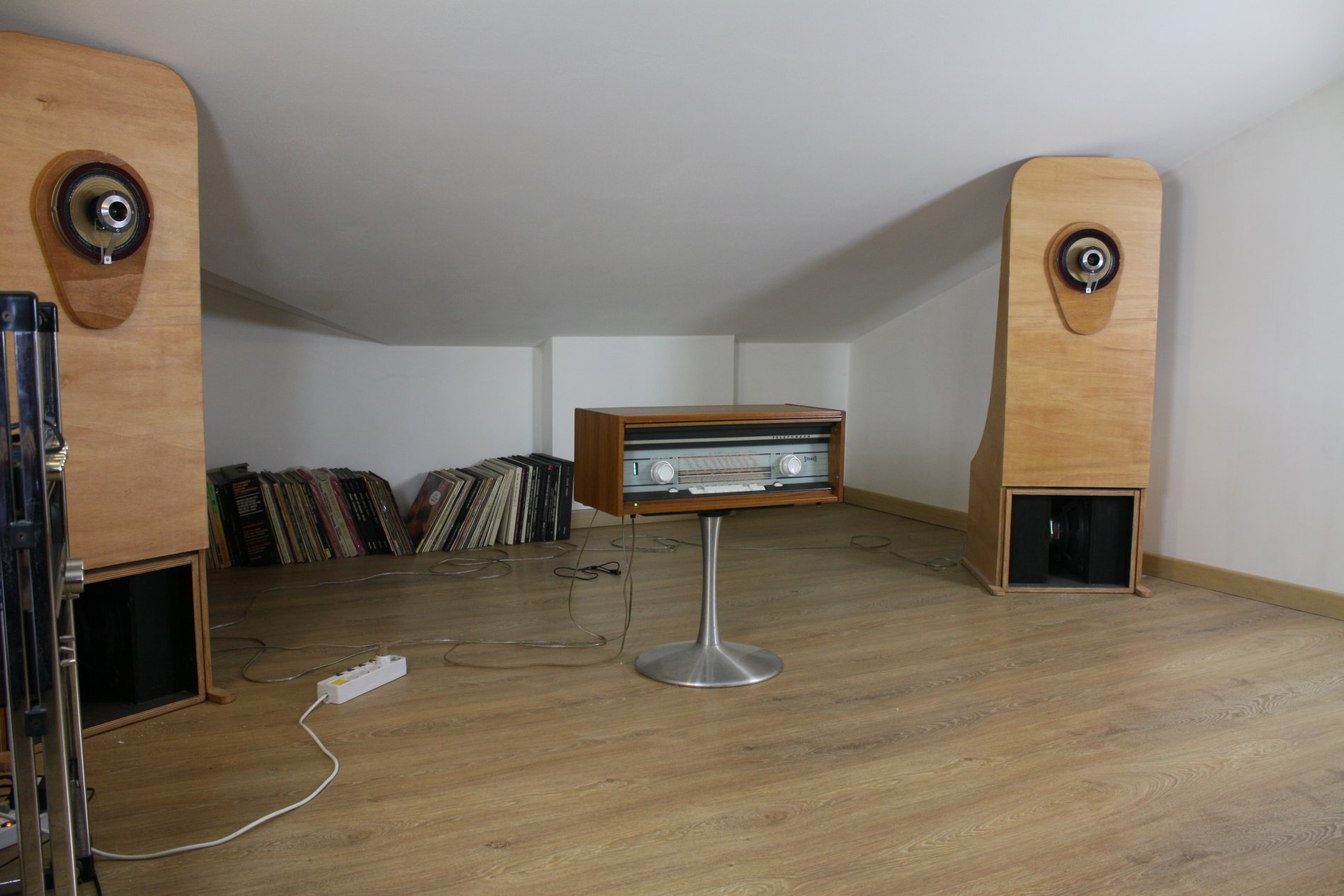
这种接收器与高效率扬声器的连接是完美的。
任何扬声器: Open Baffle, or JBL, Altec, Cervin Vega and Jensen。
带有隐藏低音炮卫星扬声器也很好。
然而,接收器不能驱动低效率的扬声器,如AR3A和相似型式的扬声器。
从这个时期起每个Concertino 2380高保真放大器都有单独的低音和高音控制。
一个有趣的特点是,因为它与响度电路联合,高音调控制也改变其效率与音量变化。
有一个频率响应的校正系统的,包括两个按钮,插入预设均衡曲线。BASS按钮强调低频,而Jazz按钮强调高频率。

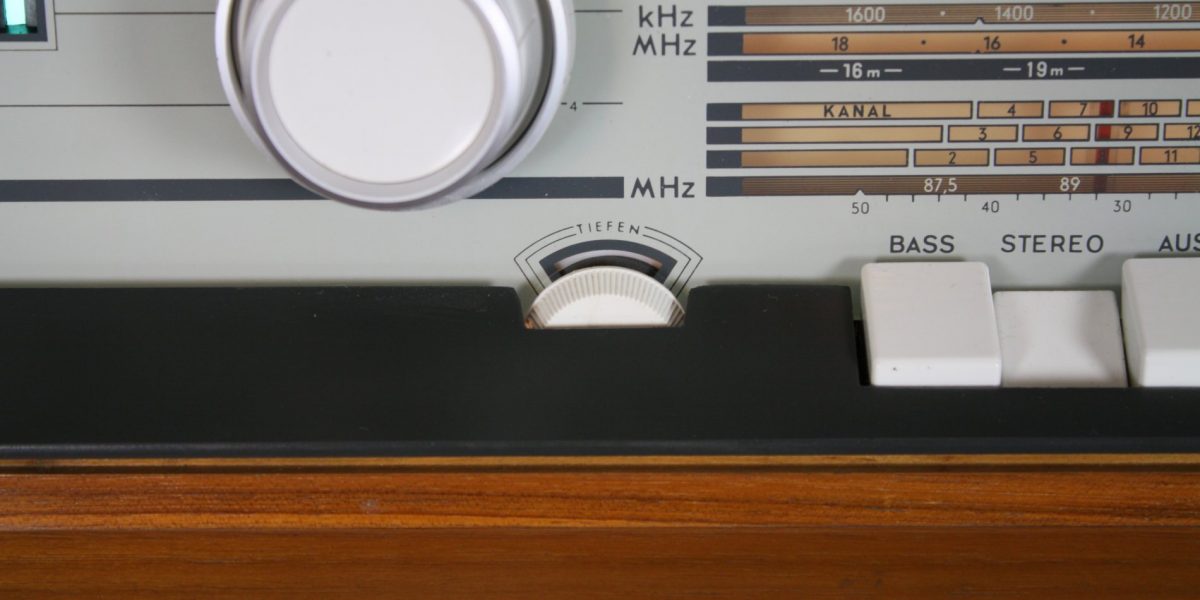


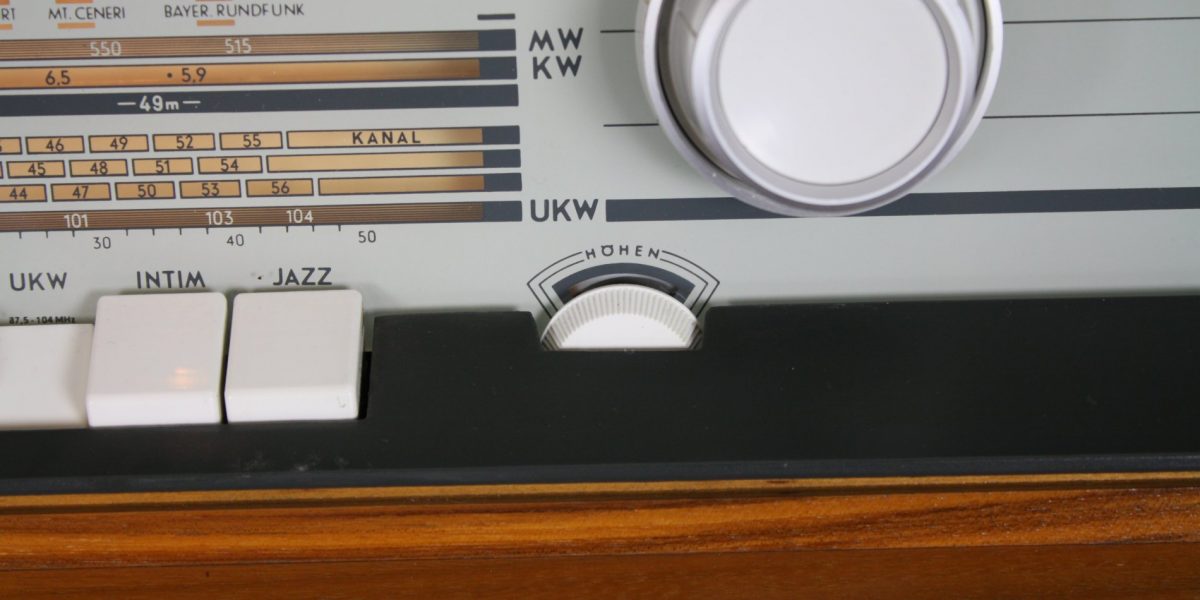



柜内有一个偶极接收FM波段和短波。铁氧体旋转天线用于長波和中波接收。铁氧体天线可以从外部旋转,以收集最大可能的信号,同时接收两个AM频带。
在图中你可以看到天线旋转的整个机制。使用内部天线,灵敏度非常好。当然,在某些情况下,使用外部天线可进一步增加接收机的灵敏度。
不同于其他德国制造设备,调谐系统是有趣的。该设备配备了独立的调幅和调频波段调谐机制。有两个调谐旋钮,独立但同轴,电缆和滑轮系统分开取决于波段。这种类型的调谐有一个非常强大的机械学。
关于保养,清洁和润滑每10至15年一次是足够的。
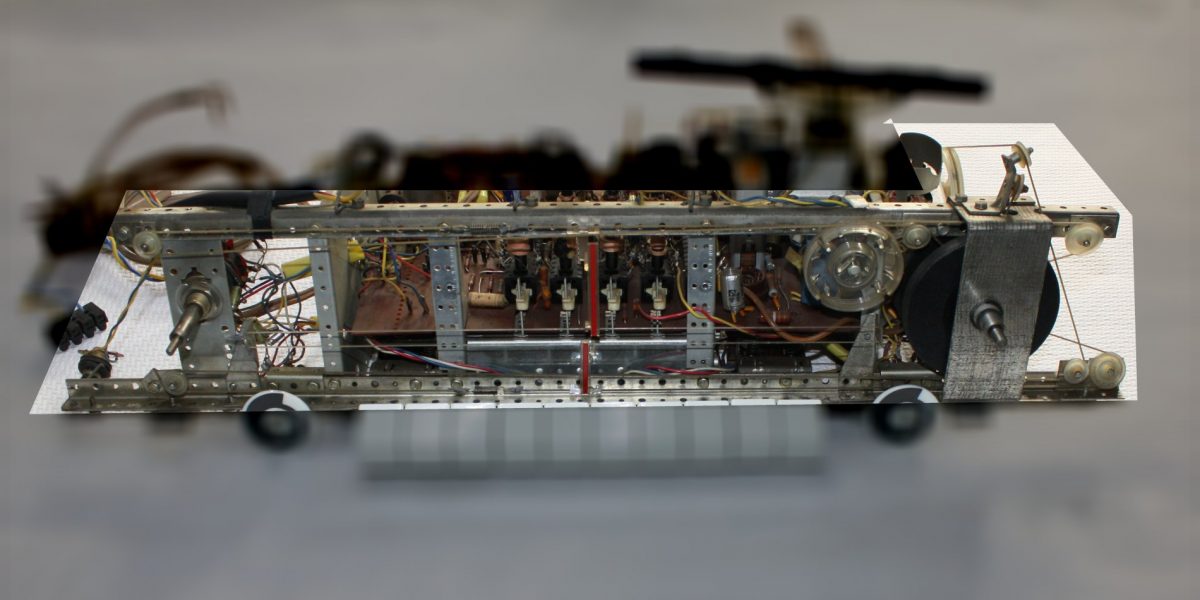





魔眼当然已更換新品了
右边是魔眼,他可以表示每个电台信号是否完美调谐。
您还可以看到同轴音量控制(内置响度)和平衡控制。
下面是Bass控制旋钮。
在顶部,我们可以找到玻璃面板。
以下按顺序,
-低音开关(低音增强),
-立体声,AUS(關),
- LW(长波),MW(中波)、KW(短波),UKW(FM),
- INTIM(降低音量20分贝),
-爵士(高音强调)。
最后有AM调幅/FM调频调谐旋钮。
下面,你可以看到高音控制旋钮。

外部扬声器输出。
插座录音机(tonbandgerat)。
唱片机输入(tonabnehmer)
AM调幅和FM调频天线输入和接地插座。





